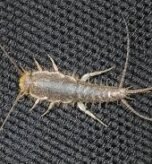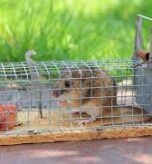Discovering an infestation of sugar ants in your home can be a frustrating experience. These tiny pests seem to appear out of nowhere, creating long trails across your countertops and floors. While they are a common nuisance, effective management does not require harsh chemical products. In fact, this guide will provide a professional and informative overview of how to identify sugar ants, use natural remedies, and implement prevention strategies to get rid of them for good.
What Are Sugar Ants, Anyway?
The term “sugar ant” is a colloquial name that homeowners use for any small ant attracted to sweet substances. It is not a precise scientific classification.
Common Types of Sugar Ants
In the United States, the term “sugar ant” most often refers to the odorous house ant. However, other species that fall under this umbrella include pavement ants, Pharaoh ants, and Argentine ants. In contrast, the banded sugar ant is a larger species found in Australia.
Identifying Your Sweet-Toothed Invader
Accurate identification is the first step in effective ant control.
- Odorous House Ants: These ants are typically dark brown to black and very small (about 1/16 to 1/8 inch long). Their most distinguishing feature is the unpleasant, rotten coconut-like smell they release when crushed. They are known for their rapid movements and the distinct trails they form.
- Banded Sugar Ants (Australia): These ants are much larger, ranging from 5 to 15mm. Females have a black head, an orange thorax, and an orange-brown band on their gaster.
Why Sugar Ants Are Attracted to Your Home
Ants are drawn to sugar because it provides a high-energy, easy-to-carry food source. It fuels demanding activities like building nests and carrying supplies. However, their diet is not limited to sweets. Sugar ants are also attracted to proteins and fats, especially in the fall. In addition, they need water, so leaky faucets, damp sponges, and pet water dishes can be major attractants. Once a scout ant finds a food or water source, it leaves behind a scented pheromone trail to guide the rest of the colony.
Are Sugar Ants Harmful?
While their presence is unwelcome, the harm posed by sugar ants is often misunderstood.
Do Sugar Ants Bite?
Odorous house ants can bite but rarely do. They are more timid than aggressive and will only bite in defense if they feel trapped. Their mouthparts are not strong enough to easily break human skin, so a bite is usually unnoticeable. Banded sugar ants can bite, but it feels like a mild, harmless prick.
Health Risks and Home Damage
Sugar ants are not known to transmit diseases and pose almost no serious health risks. The main concern is the contamination of your food. Unlike carpenter ants, they do not cause structural damage to homes in the U.S. However, it is worth noting that the Australian banded sugar ant can cause damage by nesting in wood.
How to Get Rid of Sugar Ants Effectively
Effective sugar ant elimination focuses on targeting the entire colony, not just the visible workers.
The Golden Rule of Ant Control: Why Baits Beat Sprays
Spraying repellent insecticides on sugar ants is a counterproductive approach. While it may kill the ants you see, it disrupts their pheromone trails. This often causes the colony to “bud” or split into multiple smaller colonies, which scatters the problem throughout your home.
Baiting is the most effective strategy because it targets the whole colony. Baits contain a slow-acting poison mixed with a food attractant. Worker ants carry the bait back to the nest and share it with the queen and larvae. This method ensures you eliminate the reproductive members of the colony, leading to long-term control. Be patient, as it can take 3 to 6 weeks to see complete results. An initial increase in ant activity around the bait is a good sign that it’s working.
Choosing and Using the Right Ant Bait
Strategic bait placement is vital for success.
- Proven Ingredients: Look for baits with active ingredients like boric acid, fipronil, or imidacloprid.
- Bait Selection: An ant’s food preference can change with the seasons. They may prefer protein in the spring and carbohydrates in the summer and fall. Using a dual-matrix bait can address these changing tastes.
- Strategic Placement: Place baits along visible ant trails. Good indoor spots include corners, under appliances, and along baseboards. Outdoors, place bait stations every 8-12 feet along your foundation. Crucially, keep baits away from children and pets.
Effective DIY Sugar Ant Baits
Several homemade baits can help you get rid of sugar ants.
- Boric Acid and Sugar: Mix ½ teaspoon of boric acid with 8 teaspoons of sugar and a little water to create a syrup. Soak cotton balls in this mixture and place them in problem areas.
- Baking Soda and Sugar: A simple 1:1 mixture of baking soda and powdered sugar can be sprinkled where you see ants.
- Honey and Borax: Combine honey and Borax on a small piece of cardboard.
Natural Repellents to Keep Sugar Ants Away
For immediate, non-lethal deterrence, you can use various natural substances to disrupt ant trails.
- White Vinegar: Mix equal parts white vinegar and water in a spray bottle. Spray countertops, floors, and entry points daily to remove pheromone trails.
- Soapy Water: A simple solution of dish soap and water is also effective at removing ant trails.
- Essential Oils: Peppermint, tea tree, and lemon eucalyptus oil can all repel sugar ants. Mix a few drops with water and spray near entryways, or soak cotton balls in the oil and leave them in problem areas.
- Other Natural Deterrents: Coffee grounds, ground pepper, and cucumber peels can also act as natural repellents when placed near entry points.
Long-Term Prevention: Keeping Sugar Ants Out for Good
Eliminating an active infestation is only half the battle. Preventing future invasions is equally important.
Impeccable Home Sanitation
Thorough sanitation is your best defense against sugar ants.
- Wipe down countertops daily with vinegar or soapy water.
- Store all food, especially sweets and pet food, in airtight containers.
- Clean up crumbs and spills immediately.
- Empty trash bins regularly and store them away from your home’s entrances.
Seal All Potential Entry Points
Sugar ants can get through gaps as small as 1/16 of an inch.
- Use caulk to seal cracks and crevices around windows, doors, pipes, and your foundation.
- Install door sweeps and weather stripping to block gaps.
- Check houseplants for ants before bringing them inside.
Manage Your Outdoor Landscape
The conditions around your home can attract sugar ants.
- Trim trees and shrubs away from your house to prevent ants from using them as a bridge.
- Fix leaky outdoor pipes and eliminate any sources of standing water.
- Manage aphid populations on your plants, as they produce a sweet substance called honeydew that attracts ants.
When to Call a Professional for Sugar Ant Problems
While you can handle minor infestations with DIY methods, some situations require professional help.
- DIY Methods Fail: If consistent baiting does not solve the problem after a few weeks, it’s time to call a pro.
- Widespread Infestation: If you see ants in multiple rooms, you likely have a larger, more complex problem.
- Hidden Nests: If ants are coming out of electrical outlets or from inside walls, it suggests a hidden nest that is hard to access.
Pest control technicians can accurately identify the ant species and have access to professional-grade products and specialized equipment. They can create a targeted plan to eliminate the infestation safely and effectively.
Conclusion: Reclaiming Your Home from Sugar Ants
Getting rid of sugar ants effectively requires a multi-faceted approach. Maintaining impeccable sanitation, sealing entry points, and strategically using baits are the key strategies. While natural remedies offer a gentle first step, knowing when to call a professional is vital for persistent infestations. With these tools and a consistent approach, you can successfully manage sugar ants and keep your home pest-free.



